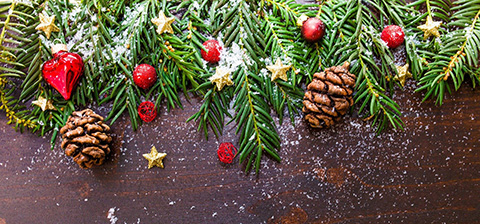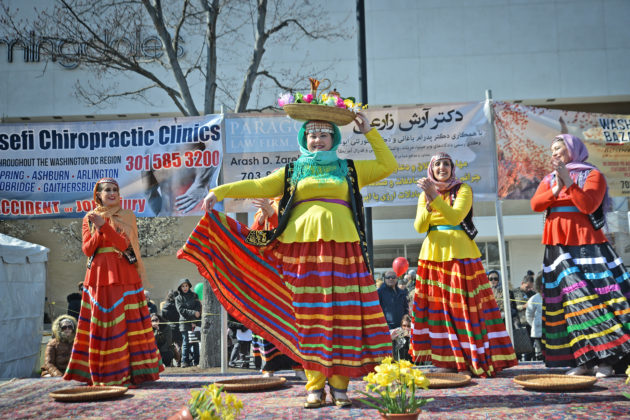
Traditional celebrations around the world
Christmas isn’t the only holiday

Sweden
Midsommar
In most Nordic countries, the summer solstice is an occasion for national celebration. ‘Almost everyone participates in a range of activities’, says Vilhelm Gabrielsson, a law student on exchange from Sweden.
On midsummer’s day, people wearing flower wreaths dance around a maypole singing children’s songs. Families and friends come together to enjoy a traditional lunch or dinner, consisting of things like crusty bread, potatoes, cheese and local delicacies such as soused herring with schnapps and beer.
‘Last year, I celebrated Midsommar with my friends’, says Vilhelm. ‘The parents of one of my friends were away, so we could use their apartment. Around twenty of us cooked food together. Then we went to the docks to eat our meals and go for a swim. It was a really happy day. That’s the best thing about festivals, I think: it gives you the chance to get together with loved ones and make memories that you’ll cherish all your life.’
Photo by Hanna Linn

Iran
Nowruz
Nowruz marks the beginning of a new year according to the Iranian solar calendar and is celebrated in March. ‘In essence, it celebrates Spring and the arrival of plenitude’, explains biomolecular sciences student Soheila Jalali.
Traditionally, the festivities include the sofreh – the place where the food is laid out – being arranged in haft-seen style, with seven items whose name begins with the Persian letter S, pronounced as ‘seen’. In addition, there will be ‘fruits, greenery, candles, the Quran and even a bowl with goldfish’, Soheila sums up. ‘We paint eggs and then we repeat ritualistic chants together.’
Soheila used to look forward to celebrating Nowruz. But it’s not the same now that she lives in Groningen.
‘I don’t have a place for sofreh here and cannot deny that I miss home and my family a lot more on Nowruz’, she says. ‘This time, they called me and we recited a few lines together over video-call, but it wasn’t the same. Afterwards, I went over to a friend’s place for dinner. You find your own way of celebrating things when you start living alone, I guess.’

Germany
Rummelpott
The people living in the German region of North Frisia have an interesting way of celebrating New Year’s Eve, called Rummelpott. Kids, teenagers and young adults dress up so they are unrecognisable, and then go from door to door after dark singing songs in the local dialect.
‘The neighbours have to guess who we are and then they give us sweets, also for the adults at home. We wish them a joyous new year and go on to the next house’, says Meike Sonnenberg, an exchange student at the Faculty of Spatial Sciences.
Some families even invite the carousers in. ‘This one time we ended up at a Russian family’s house’, recalls Meike. ‘They didn’t know about the tradition and were having a party when we knocked on their door. They were very welcoming and we spent an hour at their place.
Nowadays, Meike and her friends often go to the surrounding towns. ‘It’s more fun, because not everyone knows us and that makes it harder for them to guess who we are. But the tradition is fading, which is sad. Young people now just celebrate Halloween.’

India
Diwali
Across India, Diwali – the festival of lights – is celebrated in various ways. ‘For me, Diwali celebrations back home always involved family’, says Sucharita Sarkar, a bachelor student at the Faculty of Science and Engineering. ‘The best part was that all my cousins would be in town, as Diwali was right after Bhaidooj, a festival celebrating the bond between siblings.’
Diwali usually takes place around late October or early November and celebrates the victory of good over evil. ‘We eat a lot of traditional delicacies, burst firecrackers, and decorate our homes with lights, candles and oil lamps. We also make beautiful flower patterns called rangolis on our doorstep.’
Sucharita now celebrates Diwali with the Indian student association in Groningen. ‘We have cultural performances, good Indian food and also a DJ night with Bollywood music. I really miss home on Diwali, but I’m so grateful that I have people here who want to bond and celebrate the festival together.’
Photo by Hari K Patibanda

Turkey
Hidirellez
Hidirellez is celebrated widely across Turkey. ‘The festival has religious significance. Legend says that two prophets named Hizir and Ilyas met on earth that day’, says Zeynep Ergun, an exchange student at the arts faculty. But the festival also marks the arrival of Spring.
People usually clean up their houses before Hidirellez. On the day of the festival itself, ‘people set up bonfires and then jump over it. It’s kind of dangerous’.
Zeynep thinks that festivals help us cope with the ordeals of life. ‘In the evening of Hidirellez, we write down a wish on a piece of paper and bury it under a rose tree. I think with all the stress we experience, sometimes it feels good to believe that our wishes will come true. It keeps us going’, she says.

China
Chūn Jié
At the heart of all the festivities surrounding Chūn Jié, or Chinese New Year, is the bond between family members, says Lu Huang, a Taiwanese student at the faculty of economics and business.
‘No one scolds you on the first day of the new year, because that would bring you ill-luck. And it’s pretty much compulsory to visit your grandparents. All year we might be busy with work and other commitments, but during the start of the new year, we find a way to spend some time with our families.’
The celebration starts with an extravagant dinner with family. ‘We make a lot of food’, says Lu. ‘It’s impossible to finish it all at once, so we keep eating it for the next few days.’
And there are other traditions. One of them dates back to an old legend about a demon that would bring illness and bad luck when it touched the forehead of sleeping children. ‘To keep the monster away, parents would thread gold coins on a red string and put that under the child’s pillow’, says Lu. ‘Nowadays, children and young adults receive hong bao, red envelopes containing cash, as gifts from their elders.’
To celebrate the advent of the new year in Groningen, Lu is going to make dinner herself. ‘A friend will be visiting me around that time, and we’ve decided that we’ll cook together. It may not be that extravagant, but at least we’re trying to live up to our traditions!’
Photo by Bridget Coila

Spain
Las Fallas
In the Spanish region of Valencia, the month of March sees the extravagant celebration of Las Fallas. ‘Every neighbourhood constructs giant statues, called falla, depicting people or events. There’s a jury that chooses which one is the best. It’s a vibrant time’, says Carlos Soria, an exchange student at the arts faculty.
The tradition goes back to the local carpenters who made these statues for the feast day of their patron saint, St. Joseph. Some also claim that it celebrates the season of spring.
‘On the nineteenth day of the festival, all of the fallas except the best one are burnt. Afterwards, people eat paella, a speciality from the Valencian region’, explains Carlos. ‘I went to see the festival with my family and we had a lovely time together. I’m planning to go back next year with my friends.’
Photo by Keith Ellwood

